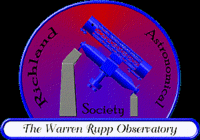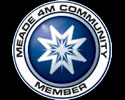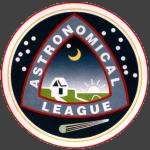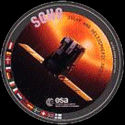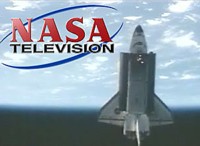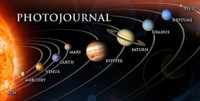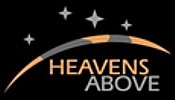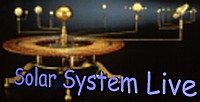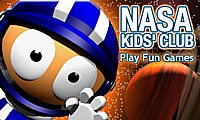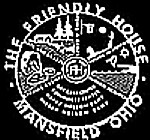February 2009

Previous Editions of the M111:
M111 Fall 07
M111 Late Fall 07
M111 Dec 2007
M111 Jan 2008
M111 April 2008
June/July 2008
August 2008
September 2008
October 2008
December 2008
February 2009
Greetings...
Welcome all ye weary travelers to a new type of M111... "On Line"! Thanks to the magic of the internet, it's now easier than ever to keep up a new newletter each month. The only thing that isn't easy is getting new content! Any time you have something you'd like to offer - be it a story of how you first got started in astronomy, a star party you just attended, a telescope you just bought, or your favorite constellation, just drop me a line with the story included and I'll be sure to get it posted!
In the meantime, I do my best to make sure everyone is aware of our newsletter. If for some reason you need a hardcopy and cannot print one yourself, please feel free to contact me at 419-845-2629 and I will be happy to send you one via regular postal mail. As always, if you have something to contribute? Let me know!
Back to top...
Words From Da' Prez
 Greetings, Fellow RAS Members!
Greetings, Fellow RAS Members!
Wow! What a great opening night we had! Thank you so much to all of our Club members who participated in the "Code Blue" project. You did such a great job getting the mirror in and outta' there! The restroom was fixed and the place cleaned up and ready... And what an awesome group of people! It's just so much fun having visitors around again...
Many congratulations to Terry for getting the book finished and I hope to have hard copies very soon! Also, a great BIG round of applause for all the great public outreach! We're so proud of our members for putting on planetarium programs and their work at Galion Lowe-Volk Park. What a great group you are!
And now? 100 Hours of Astronomy and our Messier Marathon Night is coming up! Let's keep these great activities going...
And keep shinin' on!
~Tammy
Back to top...
Apollo Upgrade
The flight computer onboard the Lunar Excursion Module, which landed on the Moon during the Apollo program, had a whopping 4 kilobytes of RAM and a 74-kilobyte “hard drive.” In places, the craft’s outer skin was as thin as two sheets of aluminum foil.
It worked well enough for Apollo. Back then, astronauts needed to stay on the Moon for only a few days at a time. But when NASA once again sends people to the Moon starting around 2020, the plan will be much more ambitious—and the hardware is going to need a major upgrade.
“Doing all the things we want to do using systems from Apollo would be very risky and perhaps not even possible,” says Frank Peri, director of NASA’s Exploration Technology Development Program.
So the program is designing new, more capable hardware and software to meet the demands of NASA’s plan to return humans to the moon. Instead of staying for just a few days, astronauts will be living on the Moon’s surface for months on end. Protecting astronauts from harsh radiation at the Moon’s surface for such a long time will require much better radiation shielding than just a few layers of foil. And rather than relying on food and water brought from Earth and jettisoning urine and other wastes, new life support systems will be needed that can recycle as much water as possible, scrub carbon dioxide from the air without depending on disposable filters, and perhaps grow a steady supply of food—far more than Apollo life-support systems could handle.
Next-generation lunar explorers will perform a much wider variety of scientific research, so they’ll need vehicles that can carry them farther across the lunar surface. ETDP is building a new lunar rover that outclasses the Apollo-era moon buggy by carrying two astronauts in a pressurized cabin. “This vehicle is like our SUV for the Moon,” Peri says.
The Exploration Technology Development Program is also designing robots to help astronauts maintain their lunar outpost and perform science reconnaissance. Making the robots smart enough to take simple verbal orders from the astronauts and carry out their tasks semi-autonomously requires vastly more powerful computer brains than those on Apollo; four kilobytes of RAM just won’t cut it.

The Chariot Lunar Truck is one idea for a vehicle equal to the lunar terrain. Each of the six wheels pivot in any direction, and two turrets allow the astronauts to rotate 360°.
The list goes on: New rockets to carry a larger lunar lander, spacesuits that can cope with abrasive moon dust, techniques for converting lunar soil into building materials or breathable oxygen. NASA’s ambitions for the Moon have been upgraded. By tapping into 21st century technology, this program will ensure that astronauts have the tools they need to turn those ambitions into reality.
Learn more about the Exploration Technology Development Program at www.nasa.gov/directorates/esmd/aboutesmd/acd/ technology_ dev.html. Kids can build their own Moon habitat at spaceplace.nasa.gov/en/kids/exploration/habitat.
This article was provided by the Jet Propulsion Laboratory, California Institute of Technology, under a contract with the National Aeronautics and Space Administration.
Back to top...
Journey Inside M104

Almost every amateur astronomer is familiar with the Sombrero Galaxy (also known as M104 or NGC 4594) - an unbarred spiral galaxy in the constellation Virgo. We've seen it in both small and large telescopes, picked up its ghostly signature in binoculars and dreamed over its structure in photographs. Now, for the first time ever, Jukka Metsavainio is giving us the opportunity to visualize what it might be like to approach this amazing galaxy from space and see it in dimension. Step inside and let's learn.
Like all our our "stereo" image produced for UT by Jukka Metsavainio, this is for crossed vision. This is for those who have better success crossing their eyes to form a third, central image where the dimensional effect occurs. Jukka's visualizations of what M104 would look like if we were able to see it in dimension comes from studying the object, photographing it, knowing the field star distances and the different wavelengths of light. Are you ready to "cross" the boundary? Then let's rock…
Discovered by Pierre Mechain in 1781 and added by Charles Messier's own hand to his personal notes on May 11, 1781, Messier Object 104 wasn't officially added to the official catalog of Messier objects until 1921 by Camille Flammarion. Although Messier had already ended his studies, he hadn't quite ended his fascination with the sky and when Pierre discovered this amazing galaxy, he confirmed his observation by adding his description of a "very faint nebula" to the records. On May 9, 1784 - almost three years later to the date - Sir William Herschel independently recovered the galaxy and whose notes state: "Extended [elongated]. Very bright toward the middle. 5 or 6' long."
By 1828, John Herschel was seeing things much differently: "There is a faint diffused oval light all about it, and I am almost positive that there is a dark interval or stratum separating the nucleus and general mass of the nebula from the light above (s of) it. Surely no illusion." Then Emil Dreyer in 1877: "Remarkable, very bright, very large, extremely extended toward position angle 92 deg, very suddenly much brighter toward the middle where there is a nucleus." And the results of Curtis from the same year "A remarkable, slightly curved, clear-cut dark lane runs along the entire length to the south of the nucleus; probably the finest known example of this phenomenon. There are very slight traces of spiral whorls." But it was 1912 and Vesto M. Slipher at Lowell Observatory who was about to make the most amazing discovery of all…
During 1910, Slipher (and later Carl Wirtz) was the first to use a spectroscope to observe the radial velocities of galaxies. What Vesto noticed was that M104 appeared to be cruising away from Earth at 700 miles per second. Such an tremendous speed was an important clue that the Sombrero was really another galaxy, and that the universe was expanding in all directions - but they didn't know that at the time. At home (within our Milky Way galaxy) noted redshifts almost always correspond to the line of sight velocities associated with the objects being observed. These observations of redshifts and blueshifts have allowed science to measure velocities by a method first designed in 1868 by British astronomer William Huggins. Redshift is also an important tool to measure the velocity of gas of interstellar clouds, the rotation of galaxies, and the actions of accretion around neutron stars and black holes.
What we know now is there's a supermassive black hole at the center of the Sombrero… one of the most massive black holes measured in any nearby galaxies. According the the findings by a research group led by John Kormendy and using spectroscopy data from both the CFHT and the Hubble Space Telescope, the group showed that the speed of rotation of the stars within the center of the galaxy could not be maintained unless a mass 1 billion times the mass of the Sun was present at the core. No wonder the eye is drawn there! The nucleus is also a strong source of synchrotron emission - produced when high velocity electrons oscillate as they pass through regions with strong magnetic fields. Although we can't see radio waves, the low ionization nuclear emission region (LINER) at M104's heart may be the energy source that weakly ionizes the gas in the Sombrero Galaxy.
And what of the dark dust ring? It's cold atomic hydrogen gas. According to infrared spectroscopic studies, it's the primary site for star formation and not the amazing nucleus. "The brightest infrared sources in the galaxy are the nucleus and the dust ring. The spectral energy distribution of the AGN demonstrates that, while the environment around the AGN is a prominent source of mid-infrared emission, it is a relatively weak source of far-infrared emission, as had been inferred for AGNs in previous research." Says George Bendo, "The weak nuclear 160 um emission and the negligible polycyclic aromatic hydrocarbon emission from the nucleus also implies that the nucleus is a site of only weak star formation activity and the nucleus contains relatively little cool interstellar gas needed to fuel such activity. We propose that this galaxy may be representative of a subset of low-ionization nuclear emission region galaxies that are in a quiescent AGN phase because of the lack of gas needed to fuel circumnuclear star formation and Seyfert-like AGN activity."
Take the time to check out this beautiful galaxy yourself. You'll find it eleven degrees west of Spica….
-- From Universe Today, February 8, 2009, Written by: Tammy Plotner
Back to top...
Welcome To Our New Member
 We'd like to welcome our newest member - Kerry Workman! If you're thinking about joining, come on in! Right now, your $40 membership gets you in for the 2009 year and this means membership to the Astronomical League, the Richland Astronomical Society and Friendly House... the rest goes to covering our electricity and insurance. Our on-line application for membership is now currently updated and running smoothly! In the meantime, if you prefer to print off regular registration and bring it with your dues to our regular monthly meetings. If you can't find what you're looking for, please feel free to email me!
We'd like to welcome our newest member - Kerry Workman! If you're thinking about joining, come on in! Right now, your $40 membership gets you in for the 2009 year and this means membership to the Astronomical League, the Richland Astronomical Society and Friendly House... the rest goes to covering our electricity and insurance. Our on-line application for membership is now currently updated and running smoothly! In the meantime, if you prefer to print off regular registration and bring it with your dues to our regular monthly meetings. If you can't find what you're looking for, please feel free to email me!
OPT Rewards
 Are you hankering after a new telescope? Do you have an eyepiece you've always wanted? Got your eye on an astronomy book? Don't shop around... Shop at OPT!
Are you hankering after a new telescope? Do you have an eyepiece you've always wanted? Got your eye on an astronomy book? Don't shop around... Shop at OPT!
Oceanside Photo and Telescope is more than just one of our Hidden Hollow sponsors - they are also a source of our club rewards program. Not only is OPT one of the country's largest and most reputable telescope dealers, but they're also offering a great discount to WRO members! Take a look around on the website. When you find something you want to order and go to check out, simply put "Warren Rupp Observatory" into the club affiliation box and... poof! You automatically get a discount. There's only one thing. The discount doesn't show until you get your final bill. How much? It could be just a few dollars and it can be as much as 20%! Now that's using a real rewards program!
For everyone, I now have a real OPT Rewards Card for you! For those who were at the January meeting, you have your card. If you weren't there, please ask next time you see me, ok? I'll keep them in my car so I don't forget!
Back to top...

